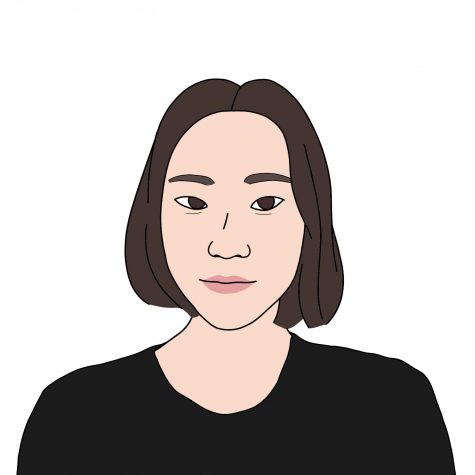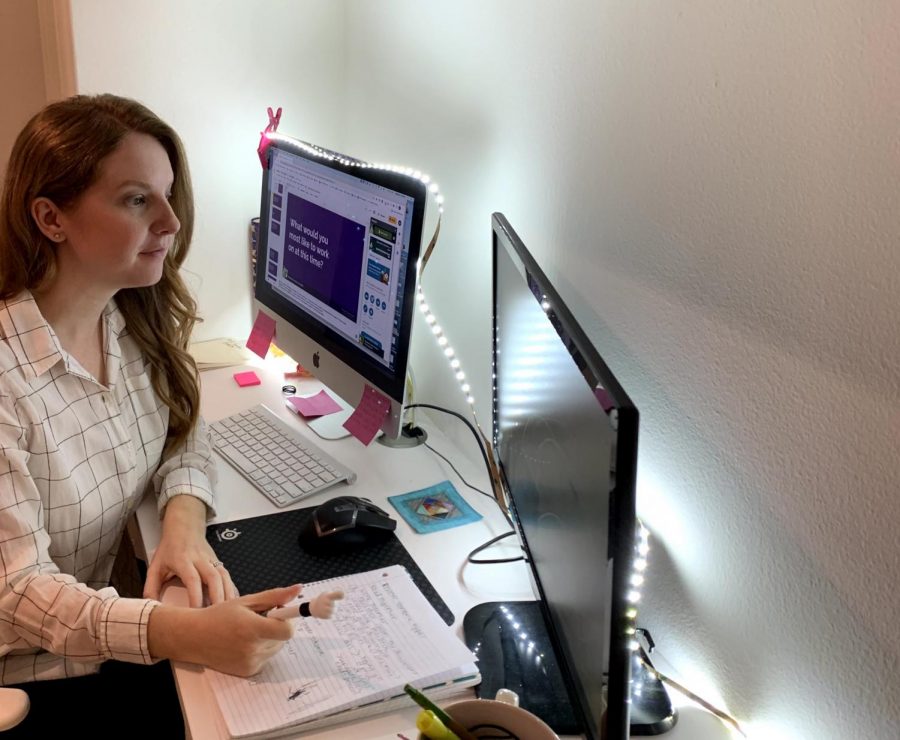IVA vs. Hybrid Teaching: What’s the Difference?
Photo courtesy of Madeline Greenwood
Like most others who teach via IVA, English teacher Madeline Greenwood works from home. “I have a hallway where I have a desk setup. I have a pretty nice setup — I have two monitors,” Greenwood said. Greenwood’s husband who teaches math also chose IVA for the same health reasons and works alongside Greenwood during the day.
Before the 2020-21 school year started, all K-12 chose between three academic models: Irvine Virtual Academy (fully online), Hybrid (two in-person days) and Blended (combination of IVA and Hybrid). Along with student selections, teachers were asked the question of how they would prefer to proceed teaching in the months to come.
“We were given the option of going fully online through IVA, going Hybrid and the option of being flexible, which basically means we were okay with both,” performing arts teacher Desmond Stevens said. “I chose to be flexible because I wanted to make sure that as many students that wanted to participate in music would have the opportunity to.”
Stevens teaches six hybrid courses, including Studio Music, and one IVA course, all from his music classroom.
“It’s strange because the whole experience of being in band or orchestra is playing with others… I suppose if things get better, it might be possible for orchestra to start playing, but I’m not sure about band since we literally play our instruments by spitting into them,” Stevens said.
Kathryn Beechinor, a social studies teacher who opted for the Hybrid model, stated that in-person models would eventually help her connect to students better.
“When you are on Zoom, everyone has their mics off. Oftentimes, you’re allowed to turn off your screen, whereas when you’re in person, body language or seeing facial expressions really [helps to] get a sense of the learner as a whole,” Beechinor said. “In person, I get more of my learner as a whole: their personality, their preferences. It just shines so much brighter.”
Other teachers felt that choosing IVA included various personal and work-related benefits while allowing them to ensure complete safety for everyone involved. Like students, some teachers are more cautious due to their own health conditions or others they live with.
“I chose IVA for medical reasons, following CDC recommendations, [doing] everything you can to limit exposure to people,” IVA English teacher Madeline Greenwood said. “So when the district gave us the option of requesting IVA, I did. It’s good because it’s consistent. I don’t have to worry about whether I’ll be going back to school or not.”
Just as teachers had different preferences for academic model selection, they had various setups for their workspace. While some chose to work completely from home, others like Stevens and his wife Emily Sheridan, a history teacher, chose to return to school.
“I come to school every day,” Stevens said.“That way Ms. Sheridan and I aren’t in the same room trying to teach at the same time. It’s also convenient because I can do small repairs on some of our instruments while I’m at school.”
Beechinor works from home when she teaches independent sessions and comes to Portola when she has live sessions. While she comes to school on Tuesdays and Thursdays to teach full-length live classes, she works from home all other weekdays.
Though not all Portola High teachers will be returning to campus in the coming days, they all have their own ways to connect with their students and remain passionate about keeping their learners safe. Whether we see our staff in person or through Zoom, it is clear that Portola is all in this together.
Your donation will support the student journalists of Portola High School. Your contribution will allow us to purchase equipment and cover our annual website hosting costs.

Jaein Kim is the Director of Photography this year on the Portola Pilot. She is extremely passionate about visual media ranging from digital art to videography...

Michelle is a Business Manager for her second and final year on the Portola Pilot. She is a fierce advocate for education equity and frozen yogurt, with...





Julia | Sep 16, 2020 at 11:38 am
Super interesting perspective coming from teacher quotes! Our college marching band actually plays with their masks on (crazy) so I will definitely be looking forward to see how other music classes this year are adapting to the pandemic:)